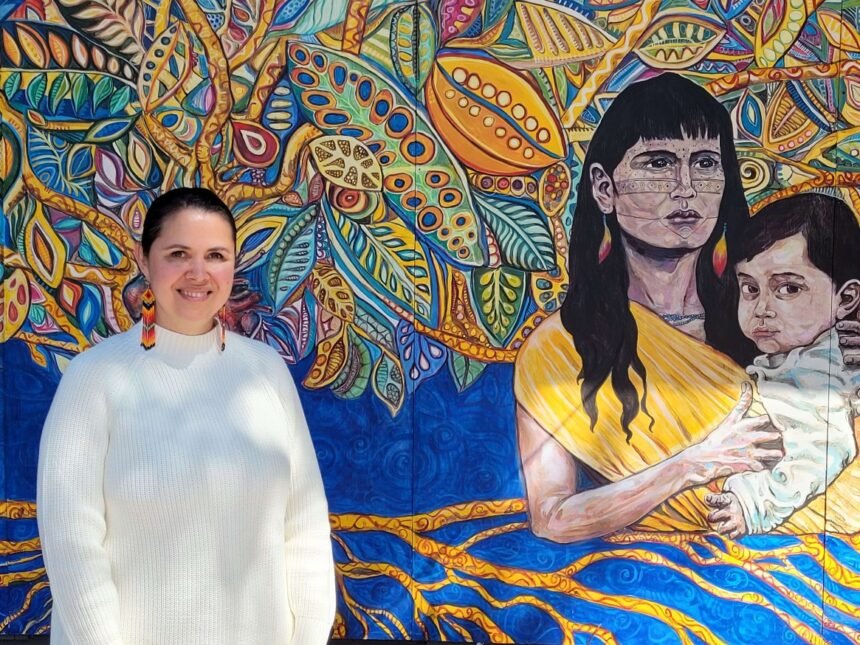By Justine Chahal, Solving Sacramento
CASA de ESPANOL, located at 1101 R Street, is a Spanish school and cultural center that has been operating since 2011. Maria Harrington, the creator and director of CASA, has over 20 years of experience teaching Spanish to students from elementary to college level.
Harrington says the goal when creating CASA was ultimately to have a cultural hub. In order to achieve this, she and her husband, Johnny Walker, decided to create the language school to have an anchor business.
“[As a] 501(c)(3), you’re always struggling trying to get money so we thought if we could provide that with our business, if we could do all of our extracurriculars outside of it with the revenue from that business, that would be awesome,” Harrington says.
Harrington and Walker originally opened the school on J Street, where Harrington says she would hand out fliers to promote the classes. The first semester they had 25 students and within a year, it quickly grew to 100.
Children as young as 8 months and as old as 3 years can learn Spanish with their parents. Kids ages 4-10 can attend classes after school or on Saturdays as well as summer camps. Teen classes range from ages 11-17 while adult courses are for those 18 and older. These classes are broken down into three levels: basic, intermediate and advanced. A student can become fully bilingual after taking the nine courses which would take roughly two to four years, Harrington says.
Now, CASA operates with the goal of providing community building and a way for others to learn Spanish that is not only engaging but life changing, she says. Solving Sacramento recently spoke with Harrington on how students learn Spanish both in and outside the classroom, using CASA’s cultural events to deepen their knowledge.
On how CASA serves people who want to learn Spanish quickly for a trip:
For those who want to learn simple Spanish for travel purposes, CASA offers a 4-day intensive workshop. This allows people to learn basic grammar and conversational phrases that would benefit them while traveling, like checking into a hotel or getting a taxi, Harrington says. Somebody can either enroll and become fully bilingual over three to four years or learn some of the basics over the course of a few days.
On how these classes are taught:
Harrington says the courses are 70% grammar and 30% conversation. CASA provides different ways to teach students Spanish by focusing on the student and their own method of learning.
“However the student learns best [when] we give them that opportunity and really recognize that everyone learns differently,” Harrington says. “How do you learn? Here’s this program that offers whatever way you learn best. That’s what we offer, giving students the opportunity to learn how they need to learn.”
Students can attend conversation labs and read books, Harrington says. Students can also attend classes online and utilize digital tools including recordings of lessons. Classes have less than 18 students. Harrington says in college courses, the larger size classes don’t allow students to speak and they’re primarily listening to their professor lecture.
“In college, you’re learning Spanish for an exam and the next day you don’t remember it right,” Harrington says. “Our program is a lot different. We’re not focused on exams. If a student wants to take an exam, I can provide them with a certificate of completion [and] a grade but everyone’s here because they want to learn Spanish, not because they have to.”
On how CASA functions as a cultural center:
CASA holds various workshops and events people can attend to interact with others and deepen their understanding of Latino culture. Harrington says these events allow students to understand the intricacies of Spanish and its connection to the culture.
“Once you learn the culture behind it, it really allows Spanish to set in and it always hooks students,” Harrington says. “Once you love the culture and you start traveling or you are engaged with the community here who speaks Spanish, it gives you more of an incentive to continue. It stops just being words in a book but real life.”
CASA holds art and poetry workshops, partnering with local and international artists to do so. The school also partially functions as a gallery where artists display their work. Harrington says she considers art as another layer of the culture she hopes to display and immerse students within. She also wants to assist artists with having their art seen.
“There aren’t many places for local artists to be able to have a premier spot in showing their art who are Latino,” Harrington says. “We are very happy to be one of those hubs.”
Food workshops are also held in partnership with caterer Cielito Lindo, where students learn how to cook regional dishes. Harrington says they do their best to represent as many countries of Latin America as possible through their events so people understand that these Spanish-speaking countries are unique.
CASA also has a travel program where anybody, not just students, can travel to different countries. Previous trips have included Cuba and Ecuador, Harrington says. These trips focus on participants not just acting as tourists but being involved in the country’s culture, she added.
On CASA’s future plans:
Harrington says she is planning to provide a preschool coming January 2026. She also wants to eventually revive their ESL program which it had prior to COVID. For now, CASA will continue to hold events like salsa nights and art shows in the coming months as well as its 4th annual Festival De Mole in August. Other trips will be held as well, she added.
“Just continuing to have this space for artists of all media to have this as their home as well as students who are interested in Spanish to have this as their home,” Harrington says. “Latinos in general, if they’re looking for a place to celebrate, reminisce on their culture back home, this place gives them the opportunity.”
This story was funded by the City of Sacramento’s Arts and Creative Economy Journalism Grant to Solving Sacramento. Following our journalism code of ethics and protocols, the city had no editorial influence over this story and no city official reviewed this story before it was published. Our partners include California Groundbreakers, Capital Public Radio, Hmong Daily News, Outword, Russian America Media, Sacramento Business Journal, Sacramento News & Review and Sacramento Observer. Sign up for our “Sac Art Pulse” newsletter here.
CapRadio provides a trusted source of news because of you. As a nonprofit organization, donations from people like you sustain the journalism that allows us to discover stories that are important to our audience. If you believe in what we do and support our mission, please donate today.











